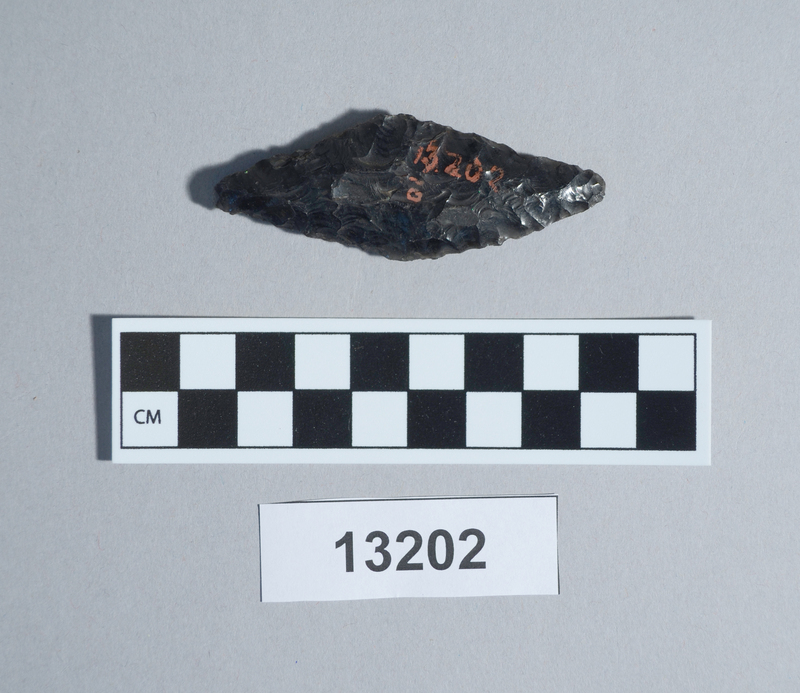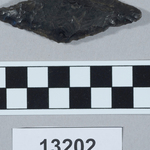| Object Number | 13202 |
| Current Location | Collections Storage |
| Culture | Late Paleolithic (uncertain) | Jomon (uncertain) | Neolithic (uncertain) | Yayoi (uncertain) | Japanese |
| Provenience | Japan |
| Period | Late Paleolithic (uncertain) | Jomon (uncertain) | Yayoi (uncertain) |
| Date Made | 12,000 BCE - Yayoi Perod |
| Section | Asian |
| Materials | Obsidian |
| Technique | Flaked |
| Description | Projectile point (尖頭器) or arrowhead. Simple elongated diamond shaped bifacially retouched tool. Obsidian. Translucent at edges with striations running diagonally. Arrowheads were used during the Late Paleolithic age and continued to be used during the Yayoi period. They appear in sites throughout Japan. Arrowheads hafted onto arrow shafts and harpoons have been found in archaeological contexts indicating they were used for hunting and fishing. Arrowheads are abundant and are found in a variety of forms. Diamond-shaped bifacially retouched points or arrowheads appear at Paleolithic sites such as Uenodaira, Nagano Prefecture in central Honshu. In form, balance and flaking pattern 13202 is quite similar to illustrated examples from Uenodaira. In size it is only slightly larger. On the eve of the Jomon period, Uenodaira is dated 12,000-10,000 BC. However, diamond-shaped types also have been found in Yayoi contexts such as at Uriyudo, Osaka Prefecture in south-central Honshu 13202 might well be a Late Paleolithic specimen although its type continue to be made throughout the Yayoi Period. |
| Length | 7 cm |
| Width | 2.6 cm |
| Thickness | 0.5 cm |
| Credit Line | Exchange with the Japanese Commissioner, World's Columbian Exposition, 1893 |
Report problems and issues to digitalmedia@pennmuseum.org.



